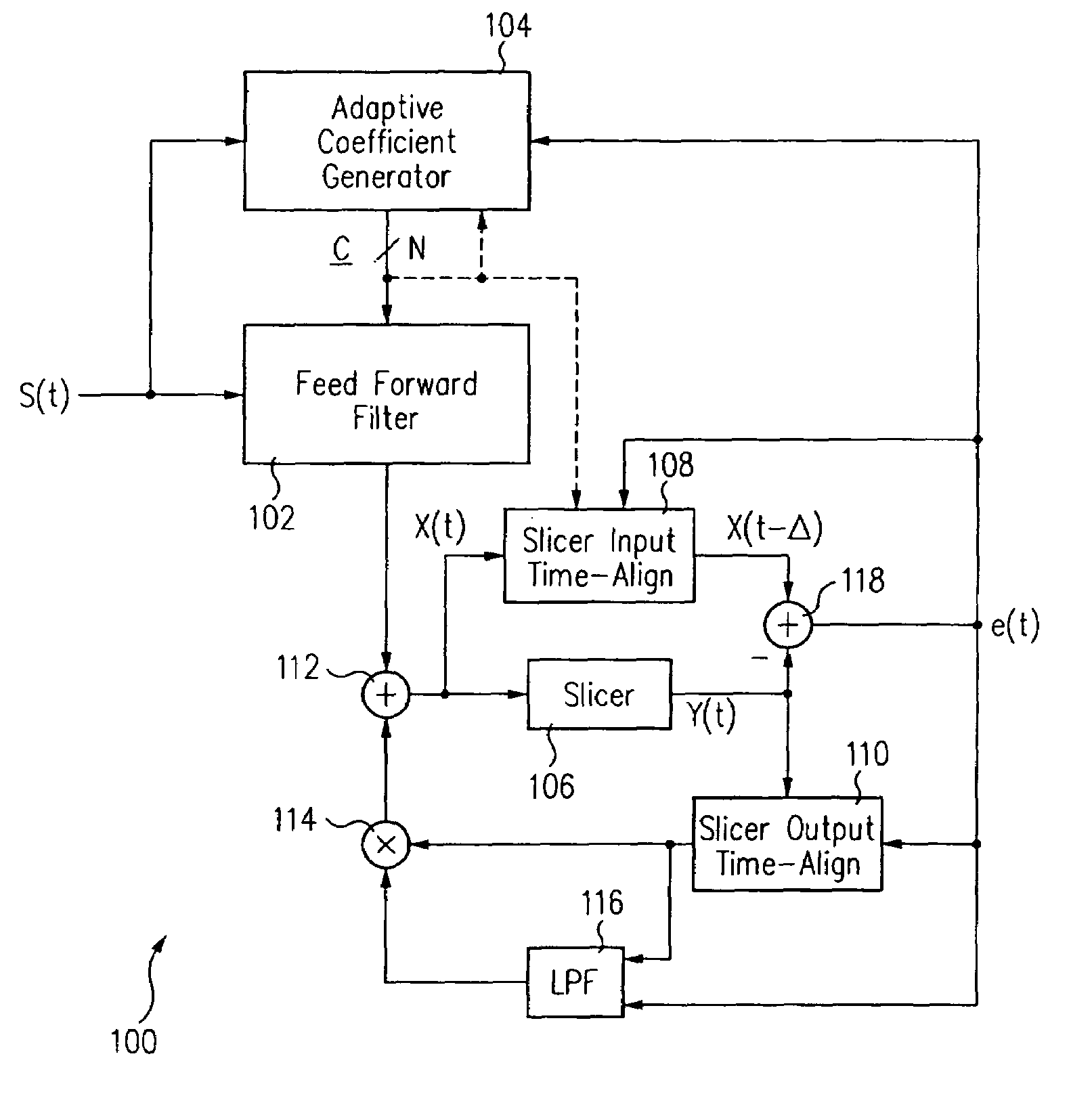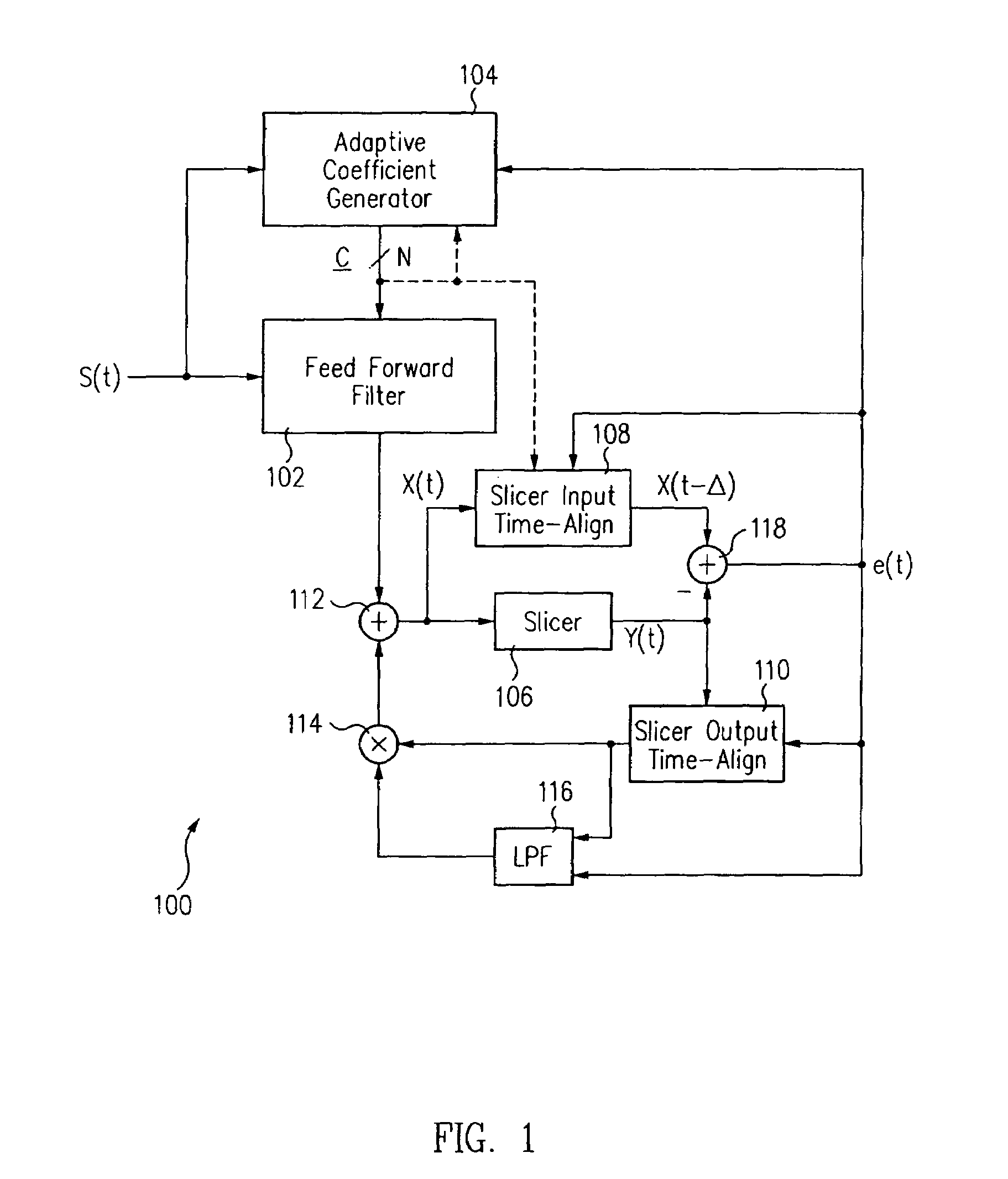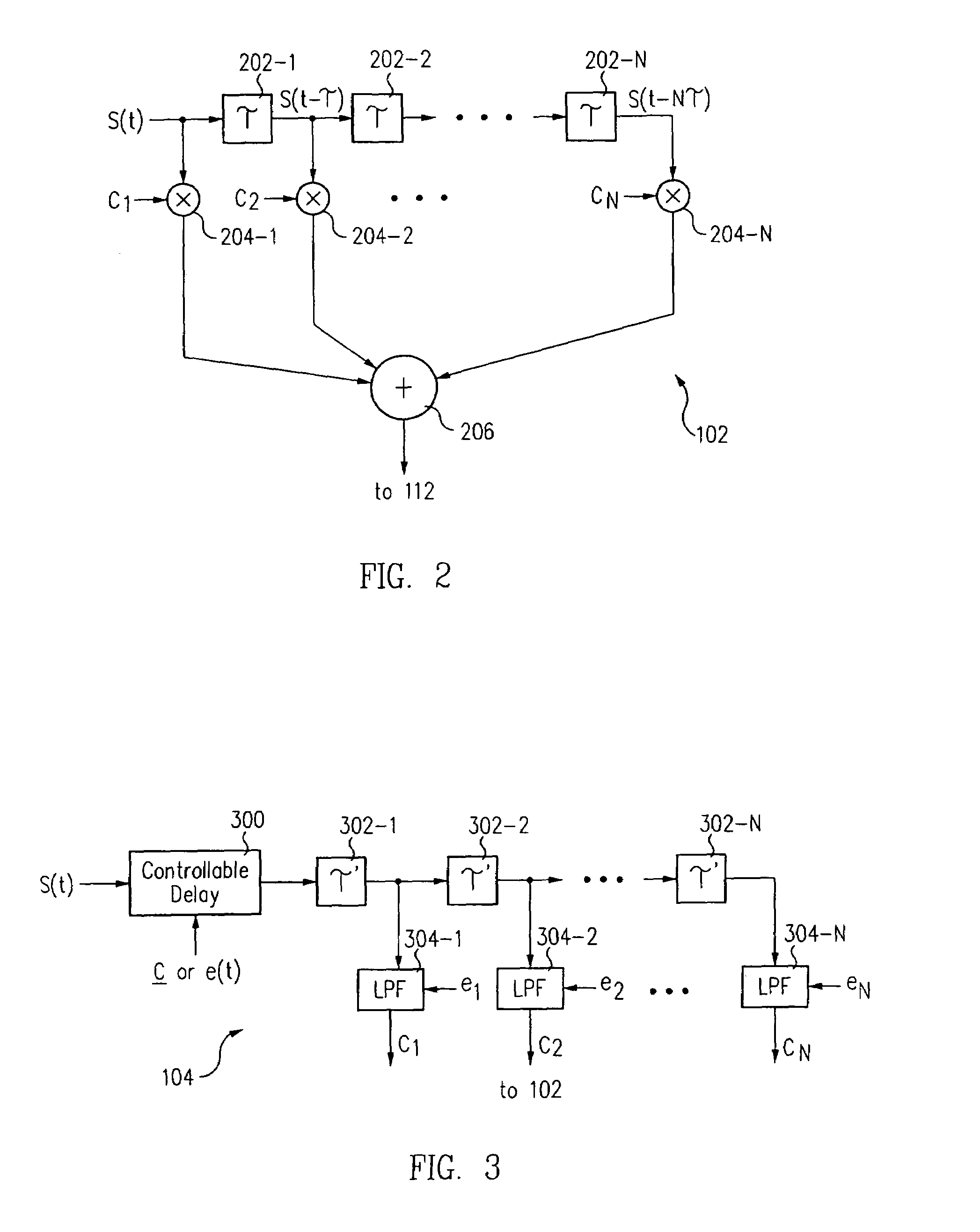Adaptation structure and methods for analog continuous time equalizers
a continuous time equalizer and adaptation structure technology, applied in the field of communication systems, can solve the problems of limited effort spent on continuous time adaptation for continuous time delay line equalizers, fractionally spaced equalizers, and “coefficient drift” with fractionally spaced equalizers, so as to reduce the bit error rate, increase the signal-to-noise ratio, and add robustness
- Summary
- Abstract
- Description
- Claims
- Application Information
AI Technical Summary
Benefits of technology
Problems solved by technology
Method used
Image
Examples
Embodiment Construction
[0038]FIG. 1 shows one embodiment of the present invention for a continuous-time least mean square (LMS) based adaptive equalizer 100. LMS-based equalizer 100 includes a feedforward filter 102, an adaptive coefficient generator 104, an output signal slicer 106, a slicer input time-align circuit 108, and slicer output time-align circuit 110. Feedforward filter 102 receives an input data signal s(t) and tap coefficients from adaptive coefficient generator 104 and generates an equalized signal, which is input to an adder 112. The other input to adder 112 is the product 114 of the output of an integrator, such as a low pass filter block 116, and slicer output time-align circuit 110. The feedback signal into adder 112 provides an iterative correction to an error signal e(t) for use by adaptive coefficient generator 104 to generate adaptive tap coefficients. The error signal, processing through adder 118, is the difference between the outputs of slice input time-align circuit 108 and slic...
PUM
 Login to View More
Login to View More Abstract
Description
Claims
Application Information
 Login to View More
Login to View More - R&D
- Intellectual Property
- Life Sciences
- Materials
- Tech Scout
- Unparalleled Data Quality
- Higher Quality Content
- 60% Fewer Hallucinations
Browse by: Latest US Patents, China's latest patents, Technical Efficacy Thesaurus, Application Domain, Technology Topic, Popular Technical Reports.
© 2025 PatSnap. All rights reserved.Legal|Privacy policy|Modern Slavery Act Transparency Statement|Sitemap|About US| Contact US: help@patsnap.com



